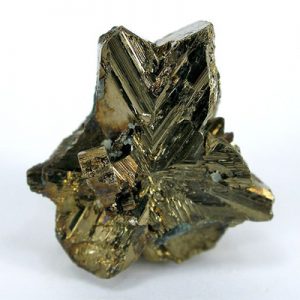Cubanite
Cubanite (also referred to as “Chalmersite”) is just a rare copper mineral and a very gem that is uncommon. Cubanite was initial delineated in 1843 for a happening within the Mayarí-Baracoa Belt, Oriente Province, Cuba. It really is opaque with a bright metallic lustre and really striking brassy to colour that is bronzey. It is an ore that is minor and frequently associated with other copper ores such as Chalcopyrite and also connected with Gold in some Gold mines. Cubanite happens in heat hydrothermal deposits with magnetic pyrites and mineral as intergrowths with copper pyrites. It results from exsolution from copper pyrites at temperatures below 200 to 210 °C, it’s conjointly been reported from chemical element rock meteorites.
Notable occurrences of Cubanite include Barracanao, Cuba; Morro Velho gold mine, Minas Gerais, Brazil; Harz Mountains, Germany and the Henderson Mine, Chibougamau, Quebec, Canada.
| Category: | Sulfide mineral |
| Formula: | CuFe2S3 |
| Crystallography: | Orthorhombic – Dipyramidal |
| Crystal Habit: | Crystals thick tabular; striated, to 3 cm; also massive. |
| Twinning: | Common with twin plane [110], in pairs, also as fourlings and sixlings; then pseudohexagonal. |
| Cleavage: | None; Parting on [110] and [130] |
| Fracture: | Conchoidal |
| Tenacity: | Brittle |
| Hardness (Mohs): | 3.5 |
| Density: | 4.03 – 4.18 (g/cm3) |
| Luminescence: | None |
| Radioactivity: | Not Radioactive |
| Other: | Strongly magnetic |
| Color: | Brass Yellow, Bronze Yellow |
| Transparency: | Opaque |
| Luster: | Metallic |
| Refractive Index: | n/a (Opaque) |
| Birefringence: | n/a (Opaque) |
| Dispersion: | n/a (Opaque) |
| Pleochroism: | n/a (Opaque) |
| Anisotrophism: | Distinctive on polished surfaces |


